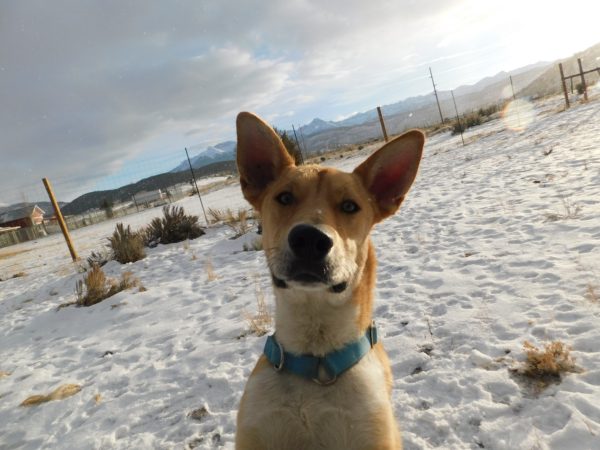
06 Dec Second Chance: Recalling Fun
Second Chance Humane Society’s Animal Resource Center and Thrift Shops have been servicing San Miguel, Ouray & Montrose Counties for over 25 years. Call the Second Chance Helpline at 626-2273 to report a lost pet, learn about adopting a homeless pet, or about spay/neuter, volunteer, feral cat, or other services. View shelter pets and services online: www.adoptmountainpets.org.

Radar
Most dog parents will agree the dog behavior that frustrates them the most is an unreliable recall (recall as in coming when called, not to be confused with a “product recall”). As one of the notions behind this Second Chance Pet Column is supporting lifelong pet-person bonds, I offer some advice on improving your dog’s recall – and thus your relationship.
I begin with a reminder that the foundation of any humane and effective training approach should be positive reinforcement, not punishment. Also, anything you try to teach a new learner strengthens in direct proportion to how many times the behavior is rewarded. And, every time the new learner does whatever is requested without the reward attached, the behavior weakens.
Does this mean that you have to reward your pet for every single response? Only when initially teaching the behavior. After the behavior is well-entrenched, using intermittent reward can maintain its effectiveness. Also of relevance, if the training isn’t fun for dogs or lacks a “pay-off,” your efforts tend to extinguish a positive response, rather than reinforce it.
“Drilling” on a particular behavior, repeating it over and over without reward, can actually be detrimental to the training process (and, at minimum, hamper enthusiasm). Would you repeat an action over and over again (repeatedly sitting on the floor and getting up) in the absence of intrinsic or extrinsic reward?
Just as important, what is fun for one dog may be scoffed at by another. Thus you want to “audition” various “reinforcers” such as different treats, toys, games, massage, playing fetch, etc. Learning which reinforcement works best for your dog allows you to develop a deeper understanding of your dog’s unique personality and quirks: the special spot he likes to be scratched, the best tone of voice, favorite kind of toy, etc.
Next week the Pet Column offers more specific training techniques for a solid recall, but most importantly – keep training fun. Dogs, like people, are one of the few species of animals who play throughout their lifetimes (perhaps one of the reasons we share such incredible bonds ).
A fun factoid: scientists refer to both our species as neotenous, defined as “retaining many of our juvenile behavioral traits.”
Indeed, dogs and people share a lifelong interest, sometimes obsession, with our “toys,”although a human’s obsessions alters as he ages, transforming from a Fisher-Price boat to a motorized speed boat. Both species share a lifetime love for ball games, although I think football is silly and not even really a true ball.
About Me:
My name is Radar. And no, that is not because of my radarish, ginourmously adorable ears. It is because of my humongous radar heart that can ultra-sonically identify good-hearted people from long distances. My radar heart has actually not met a person or a dog I don’t love.
I am a 2.5-year-young Shepherd mix with golden fuzzy hair. I would make a great family member for an active person or family. I love to play fetch, but I can also entertain myself with toys when you need a rest. I would love a new home for the Holidays.


Sorry, the comment form is closed at this time.